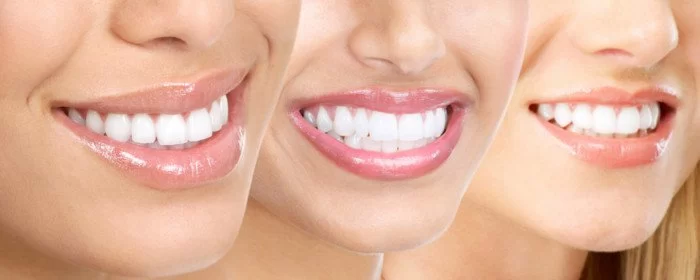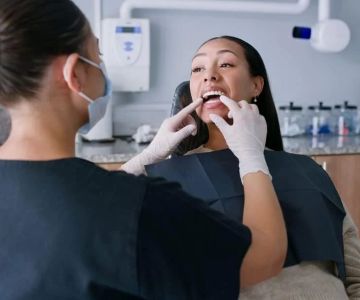
- Understanding Teeth Shifting After Braces
- Importance of Retainers in Preventing Teeth Movement
- Daily Habits to Maintain Teeth Alignment
- Long-Term Care and Professional Advice
- Real-Life Examples of Teeth Shifting Prevention
1. Understanding Teeth Shifting After Braces
After completing orthodontic treatment, many patients worry about teeth shifting back to their original position. This phenomenon is quite common because teeth naturally have a tendency to move throughout life due to pressure from chewing, gum elasticity, and even aging. The bone and ligament surrounding the teeth need time to stabilize after braces are removed, which is why immediate post-treatment care is critical.
Knowing how to stop teeth from shifting after braces is essential for preserving the investment made in orthodontic care. Teeth shifting after braces can happen subtly over months or years, sometimes going unnoticed until alignment becomes visibly compromised. Understanding this biological tendency helps patients stay vigilant and proactive.
1.1 Biological Causes of Teeth Movement
Teeth are anchored by periodontal ligaments that respond to pressure by remodeling bone. When braces reposition teeth, these ligaments and bones need time to adjust to the new alignment. Without support, teeth will attempt to revert, which is why orthodontists emphasize retention.
1.2 The Critical Period After Braces Removal
The first 6 to 12 months post-braces are the most vulnerable for teeth shifting. During this phase, patients should strictly follow orthodontist instructions to secure results. However, even years later, minor movement can occur, making long-term strategies necessary.
2. Importance of Retainers in Preventing Teeth Movement
Retainers are the frontline defense against unwanted teeth shifting after braces. They serve to hold teeth in their new positions until the bone and gums adapt fully. There are several types of retainers, each with specific benefits and use cases:
2.1 Removable Retainers
Removable retainers, such as Hawley or clear plastic types, are popular because they allow easy cleaning and flexibility. Patients must be disciplined in wearing them regularly—often nightly—to maintain alignment effectively.
2.2 Fixed Retainers
Fixed retainers consist of a thin wire bonded behind the front teeth, providing continuous retention without patient effort. This option is especially beneficial for people prone to non-compliance with removable retainers, although it requires diligent oral hygiene to prevent plaque buildup.
2.3 Customizing Retention Plans
Orthodontists typically tailor retainer usage based on individual risk factors such as the severity of initial misalignment and patient habits. Consistent communication with your dental professional ensures the best outcomes in preventing teeth from moving after braces.
3. Daily Habits to Maintain Teeth Alignment
Beyond retainers, adopting supportive daily habits helps in how to stop teeth from shifting after braces. Small lifestyle adjustments contribute significantly to long-term dental stability.
3.1 Avoiding Excessive Pressure
Chewing hard foods, nail-biting, or habits like grinding (bruxism) exert pressure on teeth, potentially causing shifts. Using a night guard to protect against grinding can be a valuable preventive measure.
3.2 Maintaining Excellent Oral Hygiene
Healthy gums and bone support are crucial in preventing teeth movement. Brushing twice daily, flossing, and regular dental check-ups keep periodontal health optimal, indirectly supporting tooth stability.
3.3 Monitoring and Early Intervention
Regular dental visits allow early detection of any shifting. If slight movements are noted, timely professional advice can prevent larger corrections later, making maintenance more manageable.
4. Long-Term Care and Professional Advice
Preventing teeth from shifting after braces is a lifelong commitment. The best approach combines personal responsibility with expert guidance.
4.1 Periodic Retainer Use
Even years after braces removal, occasional retainer use is often recommended. Many orthodontists advise wearing retainers a few nights per week indefinitely to ensure teeth remain stable.
4.2 Seeking Professional Follow-Up
Professional check-ups at least once a year after braces help track alignment and retainer fit. Adjustments can be made to the retention plan as needed, keeping teeth secure.
4.3 Customized Treatment and Products
For tailored solutions, visiting a trusted platform like Dentistry Toothtruth can help patients find appropriate retainers, oral care products, and expert services designed to support long-term teeth retention.
5. Real-Life Examples of Teeth Shifting Prevention
Consider Sarah’s story — after wearing braces for two years, she was diligent in wearing her removable retainer nightly. However, after a six-month lapse due to busy travel, she noticed slight crowding in her lower teeth. Promptly visiting her orthodontist and resuming retainer use corrected the issue before it worsened. This case highlights how quickly teeth can shift and the importance of consistent retention.
In another example, John opted for a fixed retainer after his treatment. Though initially concerned about oral hygiene challenges, he worked closely with his dentist to maintain excellent cleaning habits. Years later, John enjoys a stable smile with no noticeable shifting, demonstrating the effectiveness of fixed retention when combined with proper care.
Both examples underscore that how to stop teeth from shifting after braces depends heavily on consistent retention and professional support. For more personalized advice and to explore the best products and retainers available, Dentistry Toothtruth offers a comprehensive selection and expert guidance to protect your smile.







 Westgate Dental Arts
Westgate Dental Arts Coventry Family Dental
Coventry Family Dental Familia Dental
Familia Dental Dr. Daniel S. Fife, DDS
Dr. Daniel S. Fife, DDS Dentistry At Suburban Square: Michael I. Wollock, DMD
Dentistry At Suburban Square: Michael I. Wollock, DMD Comfort Care Dental
Comfort Care Dental The Importance of Oral Health Education During Pregnancy for a Healthy Pregnancy
The Importance of Oral Health Education During Pregnancy for a Healthy Pregnancy Why Skipping Dental Checkups Can Lead to Bigger Oral Health Problems
Why Skipping Dental Checkups Can Lead to Bigger Oral Health Problems Advantages of Porcelain Dental Restorations
Advantages of Porcelain Dental Restorations Best Tips for Brushing Your Teeth Properly for Healthy Gums: Essential Techniques for Oral Health
Best Tips for Brushing Your Teeth Properly for Healthy Gums: Essential Techniques for Oral Health How Can Diabetes Cause Tooth and Gum Problems? Preventing and Managing Oral Health Issues
How Can Diabetes Cause Tooth and Gum Problems? Preventing and Managing Oral Health Issues Healthy Habits for Promoting Good Oral Health and Hygiene: Tips for a Healthy Smile
Healthy Habits for Promoting Good Oral Health and Hygiene: Tips for a Healthy Smile